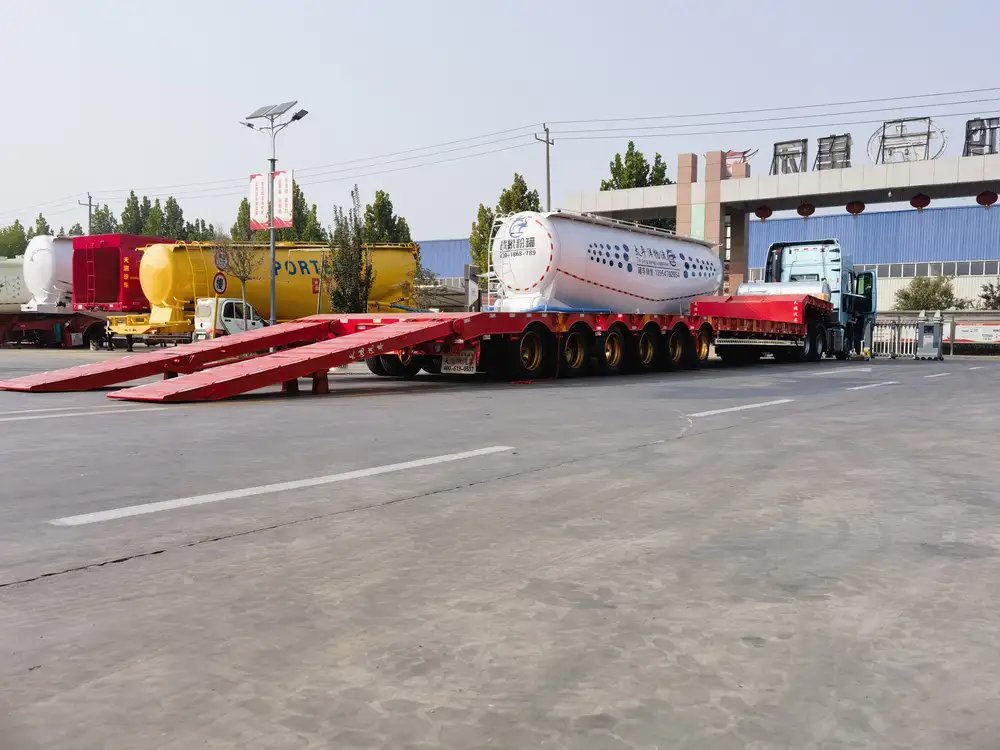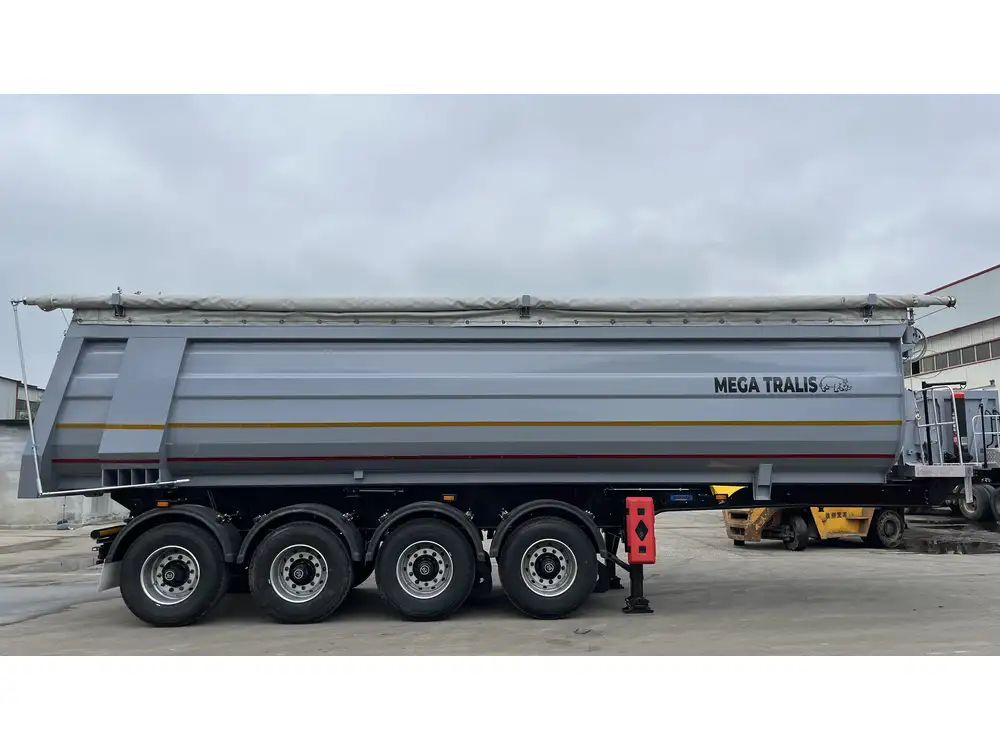When delving into the multifaceted world of transportation, one pivotal element that often attracts significant attention is the semi-trailer. A semi-trailer is not merely a structural entity; it serves as a critical component of logistics, freight movement, and overall efficiency in the transport sector.
Defining the Semi-Trailer and Its Structure
A semi-trailer is a non-motorized trailer that requires a truck or a tractor unit to tow it. Unlike traditional trailers, the semi-trailer has wheels at the rear and relies on the tractor for support at the front. This design has revolutionized transport, accommodating larger payloads and enhancing maneuverability.
Components of a Semi-Trailer
Understanding the components that make up a semi-trailer can elucidate why weight considerations are critical:
| Component | Function |
|---|---|
| Frame | The skeleton that supports the entire trailer. |
| Axles | Support and distribute the weight of the trailer. |
| Wheels | Facilitate movement over road surfaces. |
| Bed | The platform for cargo, designed for various industries. |
| Kingpin | The coupling device connecting the semi-trailer to the tractor unit. |

What Is the Weight of a Semi-Trailer?
Weight Categories
Knowing the weight of a semi-trailer is essential for multiple reasons, including compliance with legal limits, ensuring safety, and optimizing performance. The weight of a semi-trailer varies significantly based on several factors, which we will explore in depth.
Empty Weight: Also known as “tare weight,” this is the weight of the semi-trailer without any cargo. On average, the empty weight can vary:
- Standard semi-trailers: 10,000 to 15,000 pounds (4,500 to 6,800 kg)
- Light-duty semi-trailers: 7,000 to 10,000 pounds (3,200 to 4,500 kg)
Maximum Load Capacity: This refers to the maximum weight the semi-trailer is designed to carry, excluding its empty weight. Depending on the design and intended purpose:
- Common maximum load for a standard semi-trailer is 34,000 pounds (15,400 kg).
- Specialized trailers may accommodate different weights, such as flatbeds or tankers.
Gross Vehicle Weight Rating (GVWR): This is the maximum loaded weight a vehicle can safely handle, including both the semi-trailer and its cargo.
- Typical GVWR for most semi-trailers ranges from 80,000 to 100,000 pounds (36,300 to 45,400 kg).
Factors Influencing Weight
Design Specifications: The frame material, size, and overall construction of the semi-trailer affect its weight. For instance, aluminum frames are lighter compared to steel counterparts, significantly impacting the overall empty weight.
Type of Semi-Trailer: Different types of semi-trailers are designed for various applications, which directly influence their weight. Common types include:
- Reefers (Refrigerated Trailers): Heavier due to insulation and refrigeration units.
- Flatbeds: Usually lighter, as they lack sides or roofs.
- Tankers: Weight varies significantly depending on capacity and construction materials.
Payload: The type of cargo being transported can also influence the effective weight. While a semi-trailer may have a high load capacity, specific cargo types may add significant weight.

Legal Considerations and Weight Regulations
Understanding Weight Limits
Compliance with weight regulations is paramount in the trucking industry to ensure safety and legal adherence. Various regulations dictate the weight limits for semi-trailers, including:
- Federal Regulations: In the United States, the Federal Bridge Formula limits the gross weight of vehicles based on the number of axles.
- State Regulations: Individual states may impose their specific weight restrictions, often contrasting with federal standards.
| Regulation Type | Max Gross Weight | Notes |
|---|---|---|
| Federal Guidelines | 80,000 lbs (36,287 kg) | Includes vehicle plus cargo weight. |
| State Overrides | Varies | Some states allow up to 90,000 lbs. |
Safety and Compliance
Violating weight limits can lead to severe consequences:
- Fines: Penalties can reach thousands of dollars per overweight violation.
- Safety Risks: Overweight trucks can lead to accidents and structural failures, endangering drivers and roads.
- Inspection Triggers: Overweight vehicles are often subjected to stringent inspections, causing delays and operational inefficiencies.

Calculating the Weight of a Loaded Semi-Trailer
Conceptual Overview
To determine the total weight of a loaded semi-trailer, the following formula is commonly used:
[ \text{Total Weight} = \text{Tare Weight (empty)} + \text{Payload (cargo weight)} ]Example Calculation
Assuming an owner-operator has a semi-trailer with the following specifications:
- Tare Weight: 12,000 pounds
- Payload: 34,000 pounds
The total weight calculation will be:
[ 12,000 \, \text{lbs} + 34,000 \, \text{lbs} = 46,000 \, \text{lbs} ]This example highlights how critical understanding both tare and payload weights is for ensuring compliance and safety.

The Importance of Weight in Transport Efficiency
Fuel Efficiency
The weight of a semi-trailer significantly affects fuel consumption. Heavier vehicles often require more energy to operate, leading to increased fuel expenses. Strategies to enhance fuel efficiency include:
Utilizing Lightweight Materials: Opt for semi-trailers constructed from advanced materials like carbon fiber or aluminum, which can reduce tare weight.
Optimizing Load Distribution: Properly distributing cargo can minimize rolling resistance, improving fuel efficiency.
Impact on Maintenance and Lifespan
Heavy semi-trailers exert more stress on components, potentially leading to increased wear and tear. Regular maintenance can be more efficient with properly balanced weight considerations.

Conclusion
In conclusion, the weight of a semi-trailer is a multi-dimensional subject that intertwines various components, regulations, and operational efficacy. Understanding the empty weight, maximum load capacity, and the legal implications of weight limits not only helps in compliance but also enhances safety and fuel efficiency.
For manufacturers, operators, and logistics managers, this knowledge serves as a foundation for making informed decisions, optimizing costs, and ensuring the longevity of their transport equipment. By taking meticulous care of weight considerations, professionals in the semi-trailer industry can streamline operations, promote sustainability, and ultimately thrive in an ever-competitive market.
Whether you are exploring options for transporting cargo or ensuring compliance with regulations, comprehending the weight dynamics of semi-trailers is indispensable for achieving successful outcomes in today’s logistics landscape.



